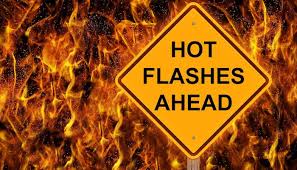Products You May Like

By HSBC Global Research
4QFY21: Lower-than-expected advances yields drove the PAT miss; credit costs in line with expectations. Gross stressed loans (including restructured loans) declined sequentially (11% now vs 15.6%); net stressed loans at 4.5%. Maintain ‘buy’ and unchanged target price of Rs 1,155; medium-term opportunities outweigh near-term risks.
Related News
4QFY21 – PAT increased 110%; credit costs remained elevated: In 4QFY21, SBICARD reported PAT of Rs 1.8 billion (up 110%), which was 32% below HSBCe. The miss was driven by lower-than-expected advances yields. Total income (net interest income plus non-interest income) increased by 2% YoY (4% below HSBCe). However, higher opex (up 5% YoY) led to operating profit declining by 1% YoY. Credit costs remained elevated at 11% (annualised) vs an average c12% in the previous four quarters (and lower than the 13.7% in 4QFY20).
The pool of stressed loans declined: Potential stressed loans declined to 11.1% of receivables vs 15.6% in 3QFY21. Of these, the gross NPAs ratio (including restructured loans overdue by more than 90 days) increased to c5% of receivables (vs 4.5% q-o-q). Loans under RBI resolution (RBI-RE) declined 48% QoQ to 4.9% (vs 9.1% QoQ). The reduction in the RBI-RE book was on account of recoveries (1.7% of loans) and slippage into NPAs (2.7% of loans). About 80% of the RBI-RE book (not classified as NPAs) is overdue by less than 30 days. Credit costs remained elevated at 11.1% (vs 10.4% QoQ) but were lower YoYy (13.7% in 4QFY20).
Total provisions stood at 6.6% of receivables. Thus, net stressed loans stood at 4.5% of loans (vs 7.6% QoQ). We expect average credit costs of c8% over FY22-23e.
Online retail and new categories drive spend recovery: Card spend was up 11% YoY but new card acquisitions were down 8% YoY. Both retail and corporate segments saw spend recovering to normalised levels. Online spend in non-travel categories (up 35-50% vs pre-COVID-19 level) are driving growth. The share of revolver loans continued to decline from 38% (pre-COVID-19) to 28%. Thus, the decline in interest yields more than offset the benefit of reducing funding costs.
NIM, therefore, declined to 13.2% (vs 14.5% in 3Q and 16.6% in 4Q20). Furthermore, higher opex growth (up 5% y-o-y) kept operating profits muted (down 1% y-o-y).
Get live Stock Prices from BSE, NSE, US Market and latest NAV, portfolio of Mutual Funds, Check out latest IPO News, Best Performing IPOs, calculate your tax by Income Tax Calculator, know market’s Top Gainers, Top Losers & Best Equity Funds. Like us on Facebook and follow us on Twitter.
Financial Express is now on Telegram. Click here to join our channel and stay updated with the latest Biz news and updates.
